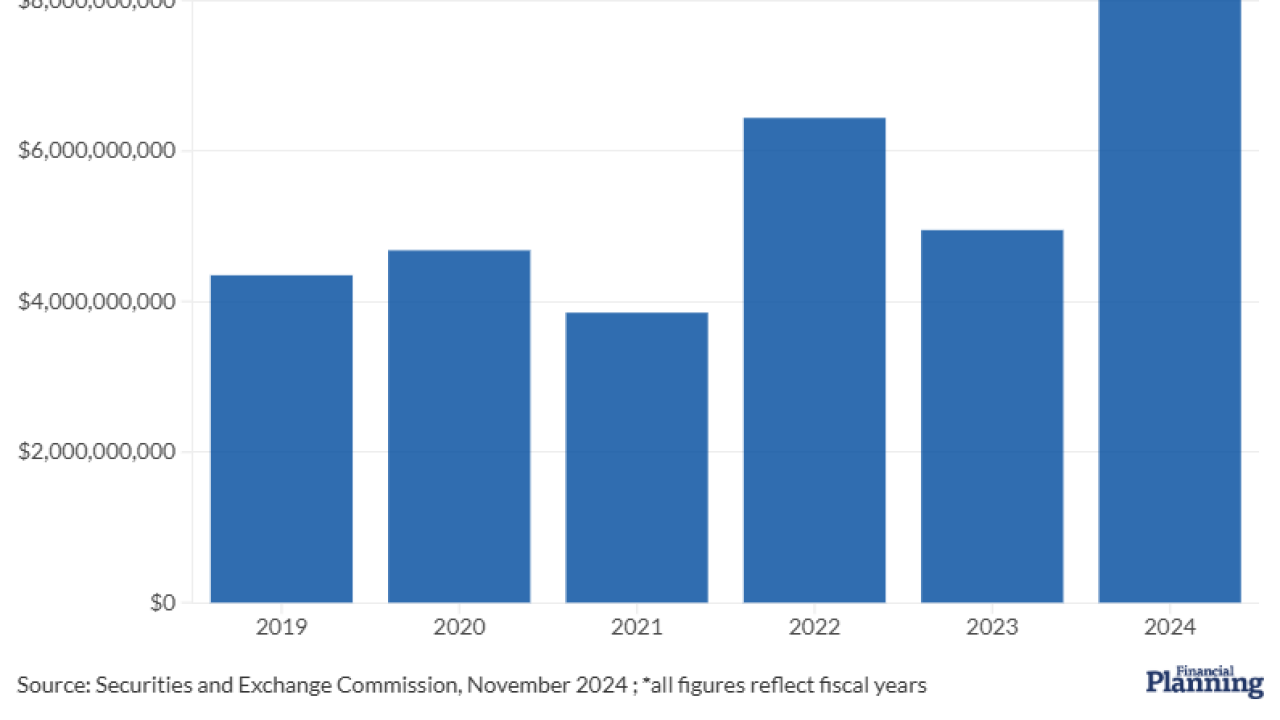Want unlimited access to top ideas and insights?
Coins have been in the news lately as the U.S. Mint produced the last penny last week, after over 230 years of continuous production.
This sudden penny shortage has caused a scramble for many retailers, with some stores even
However, advisors and experts with experience with collectibles say the right rare currency can be quite valuable.
Lucas Wennersten, owner and founder of
Coins and other collectibles can add a level of diversification for the right client, Wennersten said.
"Like most speculative investments that produce no cash flow, appreciation potential depends on the specific investment, and we won't know how good the investment was until we have the benefit of time," he said. "Gains on rare coins can be significant."
Bullion versus numismatic collecting
Coin investments can basically be split into two different types: bullion and numismatic.
Numismatic describes coins that have value because they are rare and collectible, like the 1893-S Morgan Dollar, said Trip Brannen, chief financial officer at coin dealer Coinfully. (These Morgan Dollars can
Bullion coins, like a Gold Canadian Maple Leaf, derive their value from their precious metal content, usually gold or silver.
READ MORE:
"A coin that derives its value from its metal content is going to fluctuate daily with gold or silver prices, where a numismatic coin won't," he said. "Coins that are true collectibles will price in a way that is more similar to fine art
However, he said, the more a coin is valued above the price of the gold itself, the riskier it is, as it is like the traditional art market.
"At lower premiums, you can sort of hedge the gold content and leverage the collectible premium above the gold price," he said. "If you build an extremely niche collection, then you may find it difficult to sell."
READ MORE:
Those investing in numismatic coins typically go for proof coins — like Proof American Silver Eagle or Proof American Gold Eagle — which are usually higher quality as they are often double-struck and feature a mirrored surface. These types of collectors also focus on limited editions, mistake-marked or double-stamped coins like the 1955 "Bugs Bunny" Franklin Half Dollar or the 1888 O "Hot Lips" Morgan Dollar, said Joshua D. Glawson, content manager at precious metals and coin dealer
Bullion coin collectors like to invest in pure metal, so they may seek out bullion grade American Silver Eagles, American Gold Eagles, junk silver quarters and dimes, Canadian Silver Maple Leafs, British Silver Britannias or Australian Silver Kangaroos, he said.
Glawson said his advice is to buy bullion coins and search for what are called "rounds." Silver and gold rounds may look just like coins, including U.S. Mint designs, but they do not have a legal tender face value by a government.
"Instead, silver rounds and gold rounds typically say the amount of precious metal they hold and include pretty or classic coin imagery," he said.
How to ensure authenticity and avoid scams
Many investors prefer to buy coins that have been independently certified by third parties as to authenticity and condition.
Jonathan Dane, founding partner and chief investment officer at
For purchases, Dane said he steers clients toward highly liquid coins with low markups — like American Gold Eagles, Krugerrands and American Silver Eagles — rather than bars or collectibles, which can have wide bid-ask spreads.
"Liquidity and pricing transparency matter far more than novelty," he said.
Because scams in the space are common, Dane said he only sends clients to vetted dealers his firm knows.
"I advise against online purchases where authenticity and pricing are harder to verify," he said.
Paul Williams, managing director of Solomon Global, which specializes in the secure delivery of physical gold bars and coins for private ownership, said his firm is a certified dealer for the Professional Coin Grading Service, a globally recognized body that represents the industry standard in third-party certification.
"Our guidance is clear: buy from reputable dealers who can demonstrate both knowledge and passion," he said.






